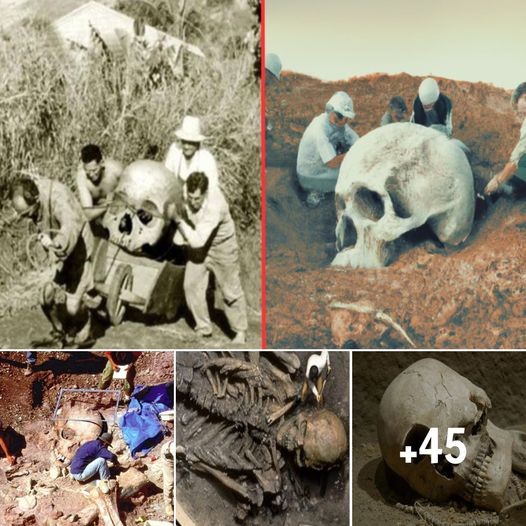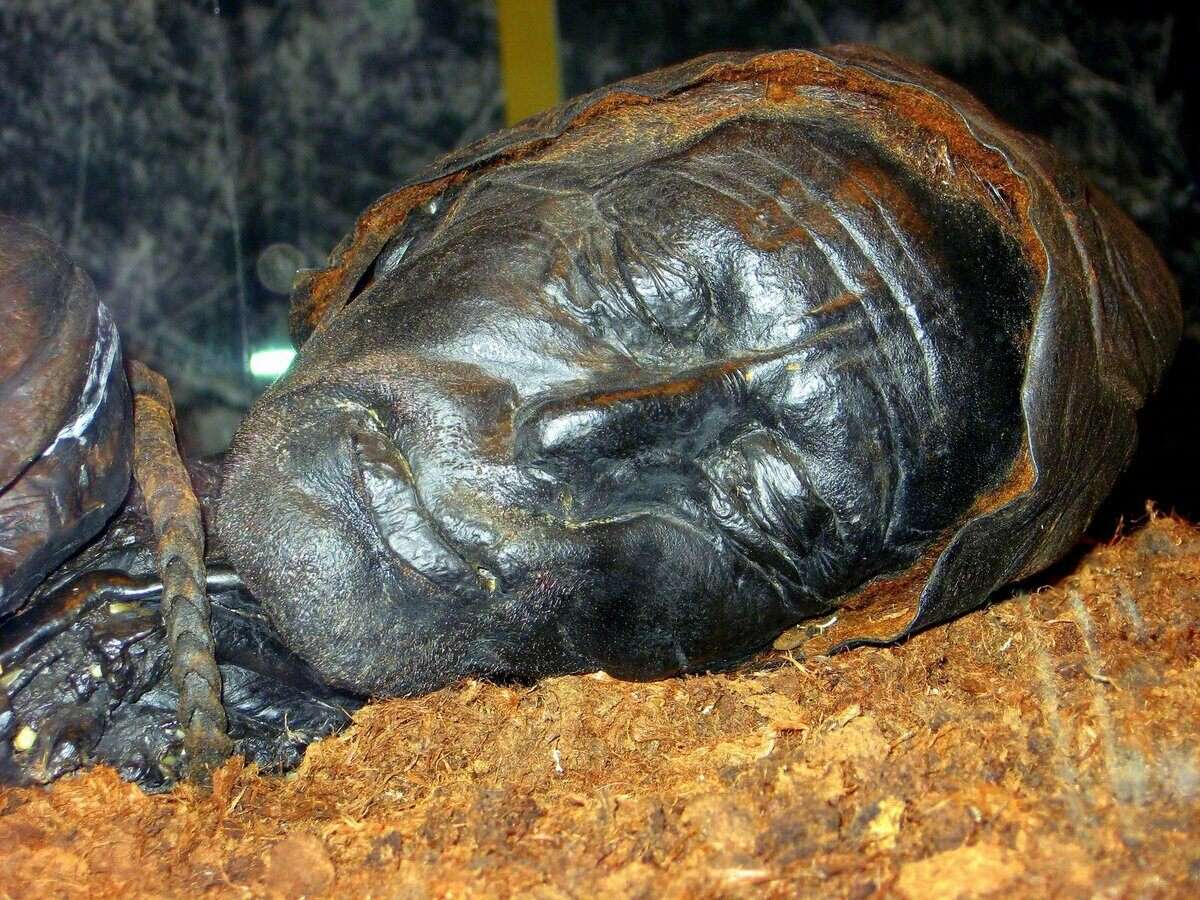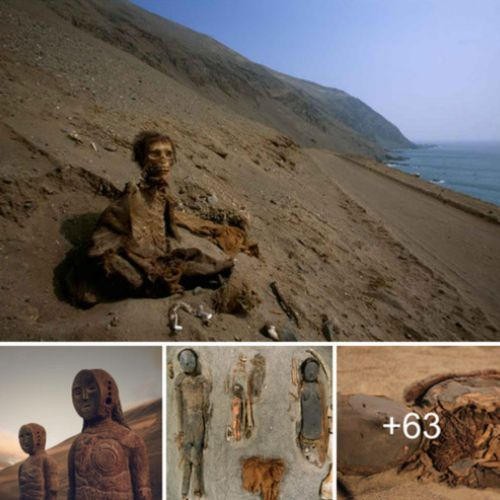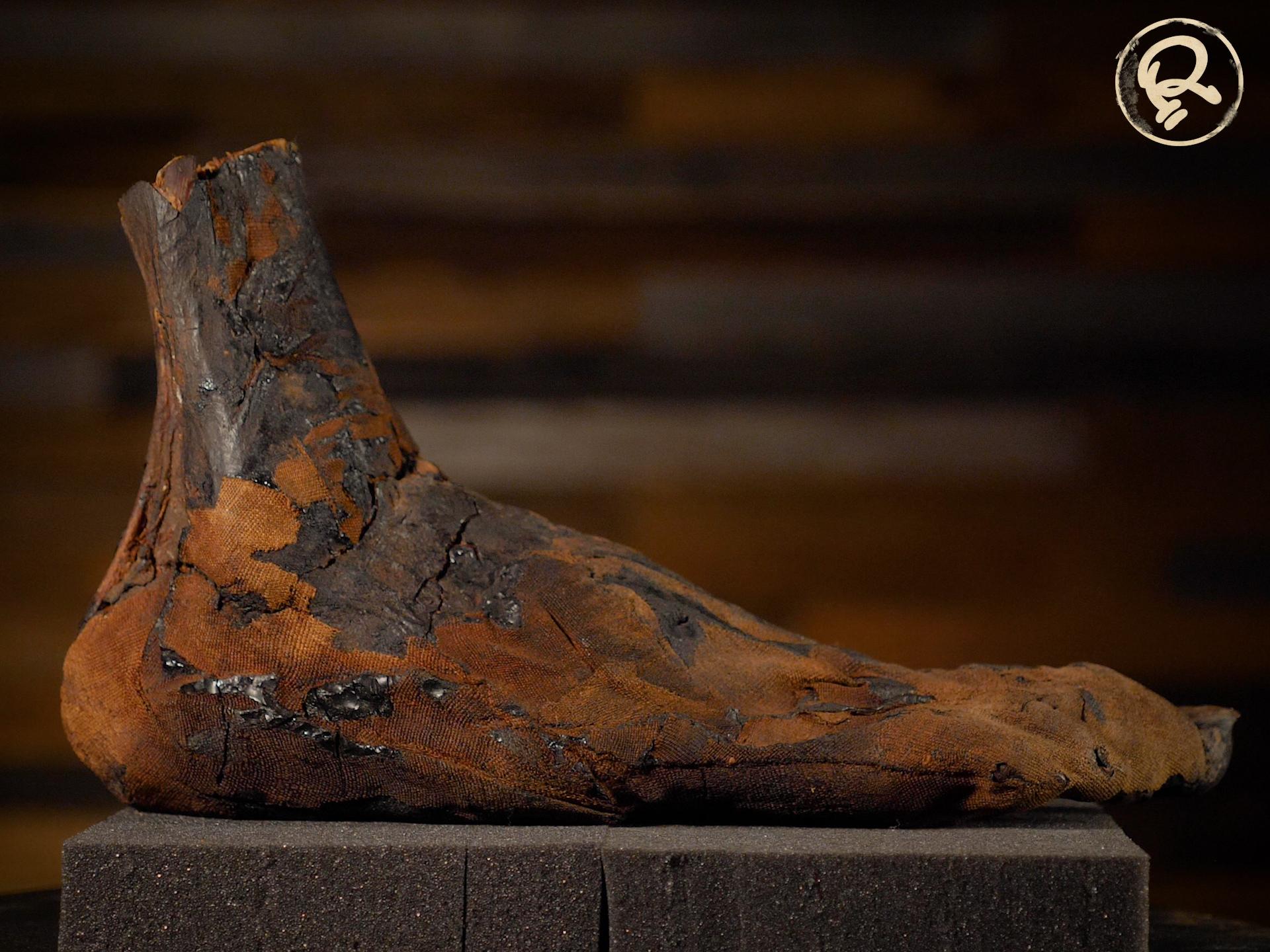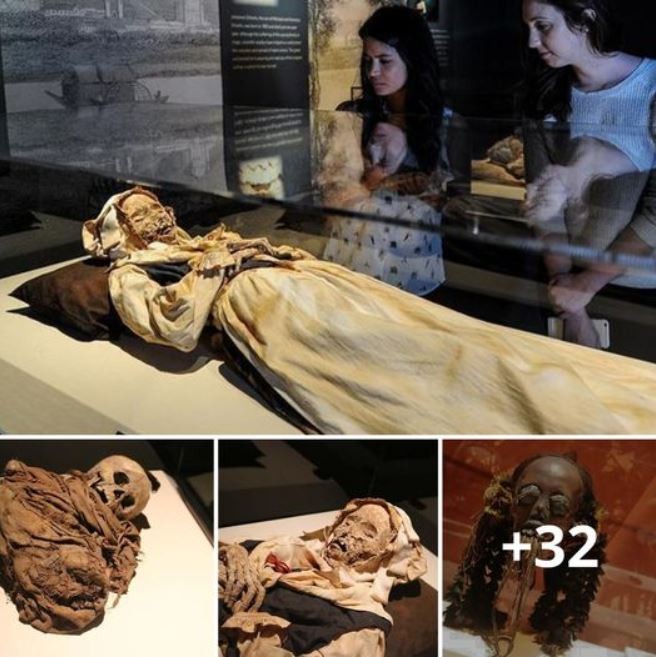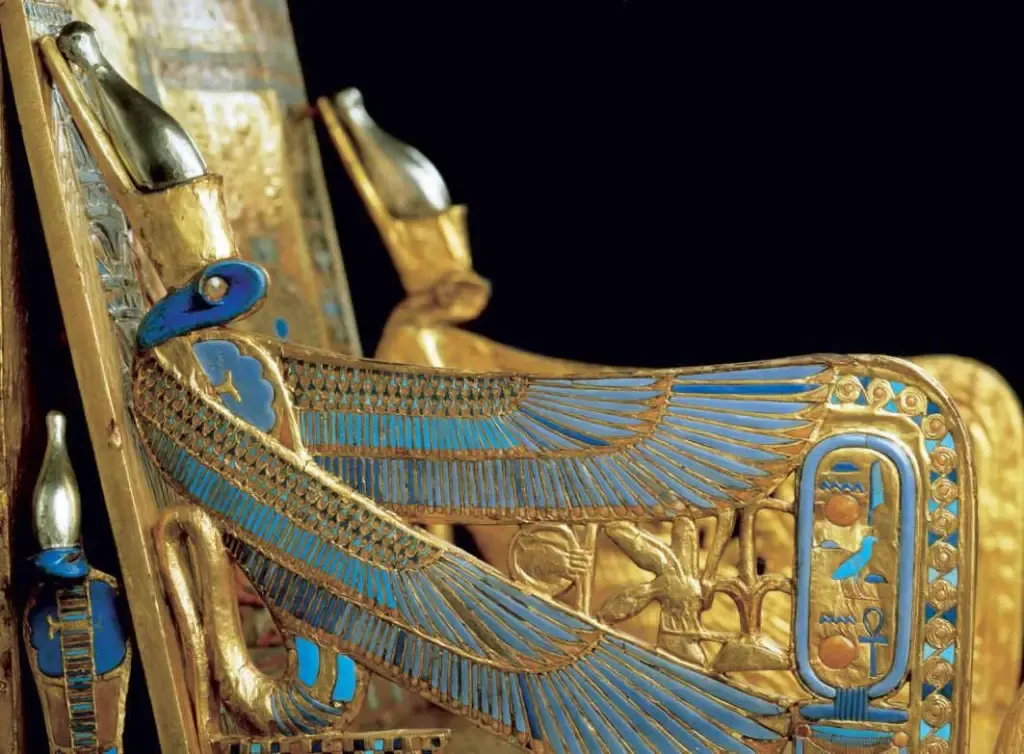Since at least the 18th century AD, there have been discoveries in northwestern continental Europe and Britain of “bog bodies” – human remains which have been preserved in the anoxic environment of bogs. These specimens are very well-preserved, with hair, skin, and clothing being retained in the process. Bog bodies offer a unique view into the society of Iron Age Germany and Scandinavia. A particularly interesting example is the Osterby Man, or the Osterby Head, which was unearthed in 1948 in Osterby, Germany, and dates to 70 – 220 AD. Only the skull remains, but the hair is very well-preserved having been tied into a Suebian knot, a type of hair style reported to be prevalent among ancient Germanic tribes in the area. It is unclear whether the Osterby Man was executed or sacrificed. We may never know the answer to this question, but there are some clues which shed light on it.
The Suebian Knot on the Bog Body Shows the Osterby Man was No Slave
The Osterby Man appears to have suffered a rather violent death. His left temple was shattered, and fragments were imbedded in his brain. His face, however, is well-preserved, as well as his hairstyle, which took the form of a Suebian knot.
The Roman historian Tacitus states that the Suebian knot was a hairstyle common among the Suebi tribe in Germany. He reports that it was used to make the man look taller and more imposing on the battle field. It was also a sign of status and distinguished slave from free man. Suebian knots, depicted in Greco-Roman art and found on other bog bodies, show that they could be worn on the side of the head – as in the case of the Osterby Man, but also in other places such as the back of the head – as is the case for the Datgen man. The most elaborate Suebian knots were worn by chieftains.
Osterby Man with hair tied in a Suebian Knot. At Archäologisches Landesmuseum. ( CC BY 3.0 )
The Suebian knot was also worn by young men from other tribes who wanted to imitate the hairstyle, possibly because it made them look both taller and more menacing on the battlefield as well as more masculine. According to Tacitus, in other Germanic tribes, this was only a common practice among young men. Among the Seubi, however, even old men wore the knot.
Osteological analysis of the Osterby Man shows that he was most likely about 50-60 years of age when he died. This indicates that he was probably Suebi and was a free man, not a slave. He may have been of high standing as well, since the Suebian knot was also a symbol of status. However, since we do not know how much more elaborate the Suebian knots of chieftains and nobles were than lower level warriors, we cannot be certain of his social status – other than that he was not a slave.
Chained Germanic, 2nd century AD. Bronze. His hair is tied in a Suebian knot. ( CC BY 3.0 )
Why Are These Bodies Found in Bogs?
One major question regarding the bog bodies is how they ended up in the bogs. Most bog bodies show evidence of suffering violent deaths. It is possible that these were cases of random killings where they were either murdered in the bog, or had their bodies deposited in the bog so that they would not be discovered. The pattern is, however, regular and common enough that it is more likely that they were either executed or sacrificed.
Like many other bog bodies, it may not be possible to tell whether the Osterby Man was executed as a criminal or sacrificed, however, there is some data which can be used to infer one or the other. For example, the Osterby Man appears to have been about middle-aged, suggesting that he had lived long enough to have gained a position of honor and respect in his culture. This suggests that he died honorably, making it plausible that he was sacrificed. However, it is not inconceivable that a man who was respected in his society may have done something to lose this respect and have been executed.
Bog Bodies: Possibly the Ultimate Sacrifice
It is known from historical sources, such as Tacitus, that the ancient Germans performed human sacrifice, though it is not clear how widespread this practice was. The ancient Greeks and Romans tended to describe “barbarian” or non-Greek or non-Roman religious practices as negatively as possible. Therefore, they may have exaggerated the prevalence of human sacrifice – which the Romans considered repulsive – in Germanic and Celtic cultures. As a result, some skepticism has to be applied to Greco-Roman historical texts when such practices are described.
When it did happen, the reason for ritual sacrifice in Iron Age Germanic society is unclear, though it was most likely to appease the gods or sanctify a place. The Iron Age Germanic Peoples probably worshiped precursors to the later Germanic gods, such as Thor and Odin. Roman writers such as Tacitus report that they worshiped a god named Tuisto – who was viewed as an earth god and later known as the ancestor or originator of mankind. His ᴀssociation with the earth also indicates that he was connected with the fertility of the soil. It has been suggested that the worship or appeasement of Tuisto may have involved ritual human sacrifice.
Broadside of mythical Germanic patriarch Tuiscon. ( Public Domain )
Tough Times, Tough Punishment
It is equally plausible that the Osterby Man was executed. Several bog bodies, such as the Tollund Man and the Elling Woman were most likely hanged. A number of bog bodies also appear to have been tortured.
Executions in the ancient world could be quite gruesome by modern standards. The reason for this was that death and violence were more likely to be an everyday reality for most ancient people. Many of the ancients probably saw death due to illness or battle regularly and would have been more jaded to it, as well as somewhat desensitized to pain and suffering. Punishments therefore considered harsh or cruel by today’s standards may have been considered average by the ancients. It may also be for this reason that human sacrifices were more acceptable.
Head of bog body Tollund Man. ( Public Domain )
Although human sacrifice and violent deaths were more tolerable to ancient people, this does not mean that all bog bodies were sacrifices, or that they valued human life less. It is true that humans were sacrificed alongside livestock or prestige items such as weapons and brooches, but this might suggest the value of the item rather than the lack of value of the individual. Livestock were considered extremely valuable, for example, in pastoralist societies such as the ancient Germanic cultures, because their livelihood (and thus their survival) depended on it. Human sacrifice at these locations may have indicated that the community performing the sacrifice was in dire need, a situation so serious that sacrificing something as valuable as a human life was necessary to resolve it.
Whether the Osterby Man was executed or sacrificed, he and other examples of people preserved in the bogs open a window into the Iron Age. They give us a chance to better understand the people who lived during that time and realize that in some ways they may not have been too different from us.
